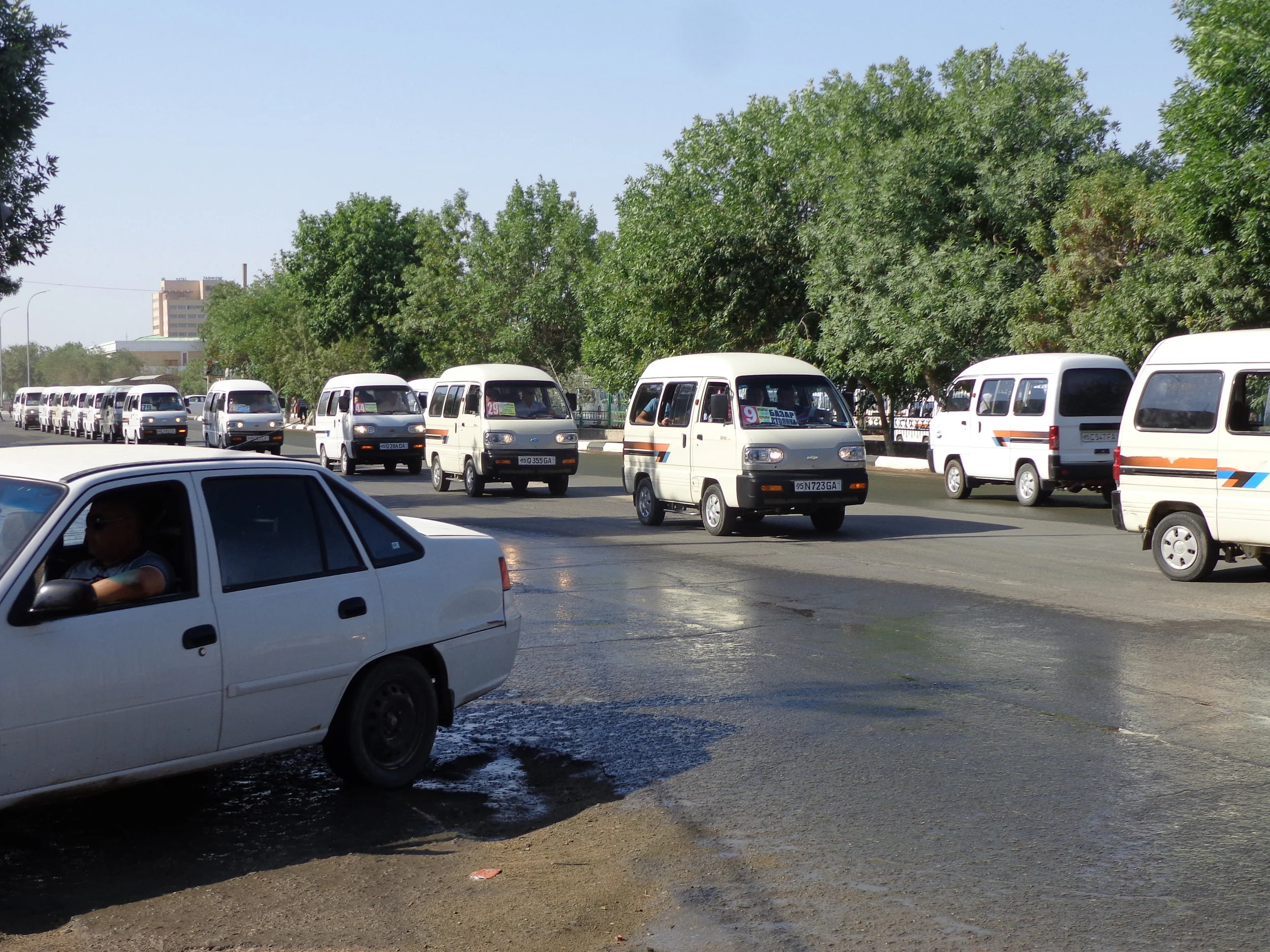Nukus, Karakalpakstan
We drove from Dasoguz and crossed the border into Uzbekistan. We then drove to Nukus to spend one night. What we learned was that although technically we were in Uzbekistan, we were in Karakalpakstan or the land of the Karakalpaks. It’s called the Autonomous Republic of Karakalpakstan. It occupies the northwest portion of Uzbekistan and is Uzbekistan’s largest region. Our Uzbek guide said that Uzbekistan allows them to operate autonomously and elect their own officials and make their own laws – as long as they don’t conflict with any Uzbek laws. For my part, I had never heard of Karakalpakstan before I arrived there. The Russians never designated them as a large enough population to be their own republic.
Karakalpakstan was an area of nomadic herders and fishers and thrived from 500 BC to 500 AD. They had extensive water from rivers that flowed into the Aral Sea, a rich delta, a branch of the Silk Road, and a great Islamic center of learning. This area was ceded to the Russian empire in 1873. Under the Soviets, water was diverted to areas upstream to grow cotton and the rivers here got diminished flow. They still have agriculture here today but it is suffering.
Nukus, the capital of Karakalpakstan, became a closed city under the USSR. The Red Army had a Chemical Research Institute here which was a major research and testing center for chemical warfare weapons. The research institute was dismantled by the U.S. Department of Defense in 2002. The Soviets developed Nukus into a modern Soviet city with broad avenues and big public buildings by the 1950s.
While we only spent an afternoon and the following morning in Nukus, it was obvious to us that the Nukus Museum of Art was their number one attraction. It is also known as the State Art Museum of the Republic of Karakalpakstan but more commonly, we gathered, known as the Savitsky Museum. Igor Savitsky was a Russian painter, archeologist, and art collector. He first went to Karakalpakstan in 1950 on an archeological expedition but was fascinated by the culture and people of the steppe and he stayed here. Perhaps the most remarkable story we heard was that he flaunted the orders from Stalin and smuggled Russian avant garde art and other Russian and non-Russian art to Nukus and kept it hidden from the KGB. That was the advantage of being in one of the poorest and most remote parts of the USSR. The museum’s collection today amounts to around 100,000 objects including paintings, sculptures, artifacts, textiles, jewelry, graphics, and antiquities from Khorezm’s ancient civilization to works of contemporary Uzbek and Karakalpak artists.
You can see the Museum’s main hall (of three halls) in the first photo. The second photo was taken just inside the building but I didn’t take any more photos. I’m sure they can be seen online.
We stayed in the Jipek Joli Hotel in Nukus. I walked the surrounding area in the morning and our small hotel was in a neighborhood area. The third photo is one of the streets by our hotel that I walked. They were mostly dirt roads but neat and clean and most houses had some sort of garden, fruit trees and grapes.
Vicky and I walked until we got to one of the big wide Russian avenues. The fourth photo is what we saw during the morning rush hour. These vehicles act as taxis or mini-busses. The lines of them were long in many directions. One interesting fact is that they are all “Chevy’s”. When the USSR collapsed, this area had a Daewoo car factory. Daewoo was a South Korean company. Anyway, the factory evidently got abandoned or came up for sale and was purchased by Chevrolet. The cars are the same cars produced during the Soviet times but now they say Chevy on them. It felt just like home.
In the last photo, what can I say. Rich town or poor town, you have to have a cemetery. This one was long and diverse but I’ll only include this one photo.





